+ Open data
Open data
- Basic information
Basic information
| Entry |  | |||||||||
|---|---|---|---|---|---|---|---|---|---|---|
| Title | Structure of VP9 in Banna virus | |||||||||
 Map data Map data | ||||||||||
 Sample Sample |
| |||||||||
 Keywords Keywords |  receptor binding / spike / receptor binding / spike /  reovirus / reovirus /  VIRAL PROTEIN VIRAL PROTEIN | |||||||||
| Function / homology | Outer capsid protein VP9/VP10/VP11 / Outer capsid protein VP9, N-terminal / Reoviridae VP9 / identical protein binding /  VP9 VP9 Function and homology information Function and homology information | |||||||||
| Biological species |   Banna virus Banna virus | |||||||||
| Method |  single particle reconstruction / single particle reconstruction /  cryo EM / Resolution: 3.8 Å cryo EM / Resolution: 3.8 Å | |||||||||
 Authors Authors | Li Z / Cao S | |||||||||
| Funding support |  China, 1 items China, 1 items
| |||||||||
 Citation Citation |  Journal: Nat Commun / Year: 2024 Journal: Nat Commun / Year: 2024Title: Cryo-EM structures of Banna virus in multiple states reveal stepwise detachment of viral spikes. Authors: Zhiqiang Li / Han Xia / Guibo Rao / Yan Fu / Tingting Chong / Kexing Tian / Zhiming Yuan / Sheng Cao /  Abstract: Banna virus (BAV) is the prototype Seadornavirus, a class of reoviruses for which there has been little structural study. Here, we report atomic cryo-EM structures of three states of BAV virions- ...Banna virus (BAV) is the prototype Seadornavirus, a class of reoviruses for which there has been little structural study. Here, we report atomic cryo-EM structures of three states of BAV virions-surrounded by 120 spikes (full virions), 60 spikes (partial virions), or no spikes (cores). BAV cores are double-layered particles similar to the cores of other non-turreted reoviruses, except for an additional protein component in the outer capsid shell, VP10. VP10 was identified to be a cementing protein that plays a pivotal role in the assembly of BAV virions by directly interacting with VP2 (inner capsid), VP8 (outer capsid), and VP4 (spike). Viral spikes (VP4/VP9 heterohexamers) are situated on top of VP10 molecules in full or partial virions. Asymmetrical electrostatic interactions between VP10 monomers and VP4 trimers are disrupted by high pH treatment, which is thus a simple way to produce BAV cores. Low pH treatment of BAV virions removes only the flexible receptor binding protein VP9 and triggers significant conformational changes in the membrane penetration protein VP4. BAV virions adopt distinct spatial organization of their surface proteins compared with other well-studied reoviruses, suggesting that BAV may have a unique mechanism of penetration of cellular endomembranes. | |||||||||
| History |
|
- Structure visualization
Structure visualization
| Supplemental images |
|---|
- Downloads & links
Downloads & links
-EMDB archive
| Map data |  emd_36872.map.gz emd_36872.map.gz | 20.9 MB |  EMDB map data format EMDB map data format | |
|---|---|---|---|---|
| Header (meta data) |  emd-36872-v30.xml emd-36872-v30.xml emd-36872.xml emd-36872.xml | 13.4 KB 13.4 KB | Display Display |  EMDB header EMDB header |
| FSC (resolution estimation) |  emd_36872_fsc.xml emd_36872_fsc.xml | 5.9 KB | Display |  FSC data file FSC data file |
| Images |  emd_36872.png emd_36872.png | 82.9 KB | ||
| Filedesc metadata |  emd-36872.cif.gz emd-36872.cif.gz | 5.1 KB | ||
| Others |  emd_36872_half_map_1.map.gz emd_36872_half_map_1.map.gz emd_36872_half_map_2.map.gz emd_36872_half_map_2.map.gz | 20.6 MB 20.6 MB | ||
| Archive directory |  http://ftp.pdbj.org/pub/emdb/structures/EMD-36872 http://ftp.pdbj.org/pub/emdb/structures/EMD-36872 ftp://ftp.pdbj.org/pub/emdb/structures/EMD-36872 ftp://ftp.pdbj.org/pub/emdb/structures/EMD-36872 | HTTPS FTP |
-Related structure data
| Related structure data | 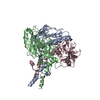 8k44MC 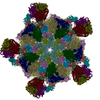 8k42C 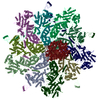 8k43C 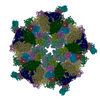 8k49C 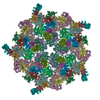 8k4aC 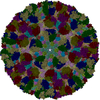 8w9pC 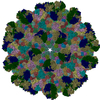 8w9qC 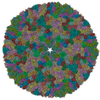 8w9rC M: atomic model generated by this map C: citing same article ( |
|---|---|
| Similar structure data | Similarity search - Function & homology  F&H Search F&H Search |
- Links
Links
| EMDB pages |  EMDB (EBI/PDBe) / EMDB (EBI/PDBe) /  EMDataResource EMDataResource |
|---|
- Map
Map
| File |  Download / File: emd_36872.map.gz / Format: CCP4 / Size: 22.2 MB / Type: IMAGE STORED AS FLOATING POINT NUMBER (4 BYTES) Download / File: emd_36872.map.gz / Format: CCP4 / Size: 22.2 MB / Type: IMAGE STORED AS FLOATING POINT NUMBER (4 BYTES) | ||||||||||||||||||||
|---|---|---|---|---|---|---|---|---|---|---|---|---|---|---|---|---|---|---|---|---|---|
| Voxel size | X=Y=Z: 0.95 Å | ||||||||||||||||||||
| Density |
| ||||||||||||||||||||
| Symmetry | Space group: 1 | ||||||||||||||||||||
| Details | EMDB XML:
|
-Supplemental data
-Half map: #2
| File | emd_36872_half_map_1.map | ||||||||||||
|---|---|---|---|---|---|---|---|---|---|---|---|---|---|
| Projections & Slices |
| ||||||||||||
| Density Histograms |
-Half map: #1
| File | emd_36872_half_map_2.map | ||||||||||||
|---|---|---|---|---|---|---|---|---|---|---|---|---|---|
| Projections & Slices |
| ||||||||||||
| Density Histograms |
- Sample components
Sample components
-Entire : Banna virus
| Entire | Name:   Banna virus Banna virus |
|---|---|
| Components |
|
-Supramolecule #1: Banna virus
| Supramolecule | Name: Banna virus / type: virus / ID: 1 / Parent: 0 / Macromolecule list: all / NCBI-ID: 77763 / Sci species name: Banna virus / Sci species strain: YN15-126-01 / Virus type: VIRION / Virus isolate: SPECIES / Virus enveloped: No / Virus empty: No |
|---|
-Macromolecule #1: VP9
| Macromolecule | Name: VP9 / type: protein_or_peptide / ID: 1 / Number of copies: 3 / Enantiomer: LEVO |
|---|---|
| Source (natural) | Organism:   Banna virus Banna virus |
| Molecular weight | Theoretical: 30.581178 KDa |
| Sequence | String: MLSETELRAL KKLSTTTSRV VGDSTLALPS NVKLSKGEVE KIAVTKKEMF DELAQCNLPT IELITREHTF NGDVIRFAAW LFLMNGQKL MIANNVAVRM GMQYATNLAG NNVKITYVTS NNVVKLGHIA AGVLANPYSN KGSGLFITYE YNLISNLIET G KVCVLFIT ...String: MLSETELRAL KKLSTTTSRV VGDSTLALPS NVKLSKGEVE KIAVTKKEMF DELAQCNLPT IELITREHTF NGDVIRFAAW LFLMNGQKL MIANNVAVRM GMQYATNLAG NNVKITYVTS NNVVKLGHIA AGVLANPYSN KGSGLFITYE YNLISNLIET G KVCVLFIT SLSTTASSTN SFAYSTCSVP IENWDFNMIK LTAETSCASL TAMTNLVNSL VPGERTRPVG LYVDIPGVTV TT SASSGSL PLTTIPAVTP LIFSAYTKQV EEVGVINTLY ALSYLP UniProtKB:  VP9 VP9 |
-Experimental details
-Structure determination
| Method |  cryo EM cryo EM |
|---|---|
 Processing Processing |  single particle reconstruction single particle reconstruction |
| Aggregation state | particle |
- Sample preparation
Sample preparation
| Buffer | pH: 7.4 |
|---|---|
| Vitrification | Cryogen name: ETHANE / Chamber humidity: 100 % / Chamber temperature: 289 K / Instrument: FEI VITROBOT MARK IV |
- Electron microscopy
Electron microscopy
| Microscope | JEOL CRYO ARM 300 |
|---|---|
| Electron beam | Acceleration voltage: 300 kV / Electron source:  FIELD EMISSION GUN FIELD EMISSION GUN |
| Electron optics | Illumination mode: FLOOD BEAM / Imaging mode: BRIGHT FIELD Bright-field microscopy / Nominal defocus max: 2.5 µm / Nominal defocus min: 0.5 µm Bright-field microscopy / Nominal defocus max: 2.5 µm / Nominal defocus min: 0.5 µm |
| Image recording | Film or detector model: GATAN K3 (6k x 4k) / Average electron dose: 40.0 e/Å2 |
 Movie
Movie Controller
Controller











 Z
Z Y
Y X
X


















